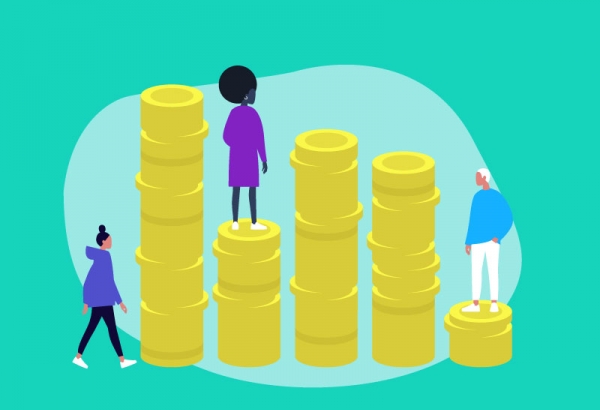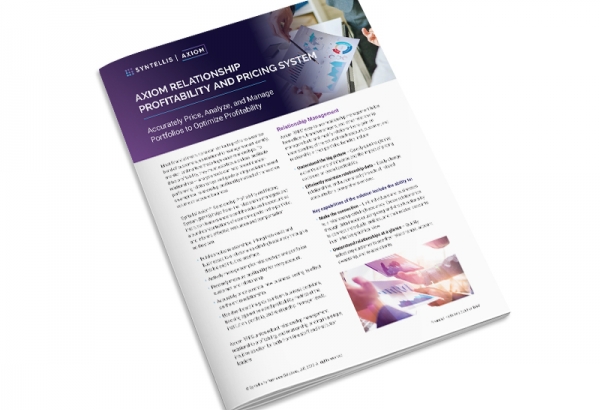The rising popularity of neobanks threatens to draw valuable customers away from traditional banks, credit unions, and other financial services companies.
At the same time, many financial institutions continue to battle the repercussions of rising interest rates and waning consumer trust fueled by the high-profile bank failures of early 2023. Consumers are more cognizant of where they keep their hard-earned dollars as a result.
Now is a critical time for bank leaders to implement strategies to stave off competition from neobanks. They must reassess and adapt to meet evolving consumer demands for convenient, secure, and personalized financial services.
The rise of neobanks
Neobanks — also known as fintech or digital banks — are financial services companies that operate entirely online, with no physical locations. They attract consumers with the conveniences of digital-only services and incentives such as lower fees, faster loan approvals, and early paycheck access. They typically make it easy for individuals of all income levels to open new accounts and access financial services, drawing in consumers who may be averse to traditional banks. At the same time, neobanks pose potential risks for customers, as many are not insured by the Federal Deposit Insurance Corporation (FDIC).i
While neobanks have been around since the early 2010s, they have exploded in popularity recently.ii The neobanking industry has an estimated value of $96 billion worldwide and is projected to grow at a compound annual growth rate (CAGR) of 54.8%, climbing to more than $2 trillion by 2030.iii In the U.S., neobanks are projected to have more than 39 million customers by 2025, up 171% from 14.4 million in 2020.iv
A need to offer personalized services
To counter the growing threat of neobanks, many traditional banks are taking steps such as improving online access, eliminating overdraft fees, and increasing access to financial services. At a fundamental level, they should work to differentiate themselves and accentuate the positives they offer. They should focus on brand awareness, highlight what makes them unique, and leverage their local footprint and employee talent to offer more personalized services.
Bank leaders can accelerate the shift to contactless payment with flexible personalization options at their institutions and develop more accessible services for underbanked and unbanked community members. Expanding digital offerings remains an important strategy, but bank leaders should work to ensure such services don’t feel impersonal.
A recent study by Accenture found that bank customers crave personalized services. Many customers view digital services as impersonal, with more than 60% using online services just for simple functions, such as viewing account balances. Sixty-seven percent of those surveyed said they see bank branches in their neighborhood as a sign of a bank’s financial stability and access.v
By offering more personalized services, traditional banks can differentiate themselves from digital-only providers and improve customer engagement and loyalty. Tools that enable finance leaders to analyze and track both individual account relationships and complex relationships are essential to providing customized services. Bank finance leaders can use profitability analysis and reporting tools to analyze individual accounts and examine trends and drivers. They help financial institutions assess which accounts drive value, project the impacts of focused strategies, and apply those learnings to drive profitable growth and better serve customers.
The power of relationship analysis tools
In managing portfolios, it is increasingly important to understand the value of each relationship to your institution. In addition to looking at individual accounts, profitability analysis tools can help finance leaders assess a client’s full scope of influence by defining complex relationships among related clients.
Complex relationships may encompass commercial and retail relationships and all associated accounts. For example, a business owner may have both business and personal accounts with a bank, and that individual may have referred business associates or family members who also have accounts with the institution. Once relationships are defined, institutions can rank client accounts based on metrics such as monthly contribution, 12-month contribution, and 12-month risk-adjusted return on capital (RAROC).
Understanding the value of all relationships can help guide institutional strategies to strengthen relationships and grow profits. Financial institutions can use that information to offer personalized services and pricing on loans and deposits. They can market products and services to the most appropriate clients with targeted cross- and up-sell opportunities. It also can help create a better incentive structure for relationship managers to deepen those client relationships.
The use of these types of data and analysis tools is increasing industry-wide. A Syntellis survey found that two-thirds (66%) of financial institutions are working to implement or improve relationship profitability analysis, while 23% already have robust systems in place.vi
Industry experts predict that competition from neobanks and other non-traditional financial services companies will continue to grow for the foreseeable future. To retain and attract today’s customers, traditional banks must embrace digital transformation and leverage the power of personalized services.
Relationship analysis and reporting tools, such as Syntellis’ Axiom™ Relationship Profitability and Pricing System (RPPS), provide bank leaders with a comprehensive view of individual customers and complex relationships. Armed with that information, institutions can proactively manage accounts, tailor pricing and services to meet specific client needs, and provide the best customer service possible to lessen the chances that digital-only competitors will lure them away.
Resources:
i FDIC: “Is My Money Insured by the FDIC?” FDIC website. July 2023.
ii Olkypay: Origins of the First Neobank. April 19, 2021.
iii Grand View Research: Neobanking Market Size, Share & Trends Analysis by Account Type, by Application, by Region, and Segment Forecasts, 2023-2030.2023.
iv Statistica: “Number of Neobank Account Holders in the United States,” 2020-2025. Sept. 5, 2023.
v Accenture: Global Banking Consumer Study: Reignite Human Connections to Discover Hidden Value. 2023.
vi Syntellis: 2023 CFO Outlook for Financial Institutions: Performance Management Trends and Priorities. 2023.
Additional Resources

6 Best Practices for Integrated Margin Planning in a Rising Rate Environment

RAROC: A Best Practice Approach to Profitability


